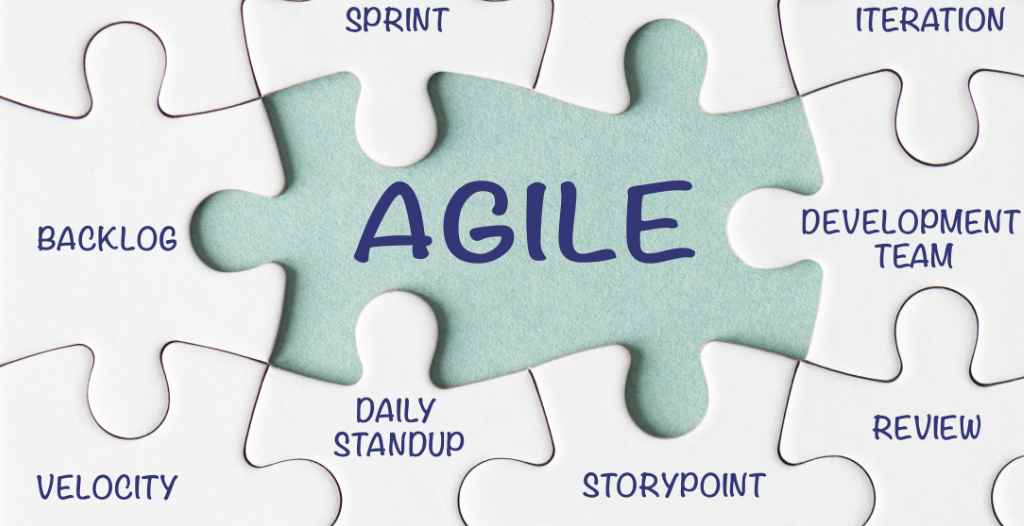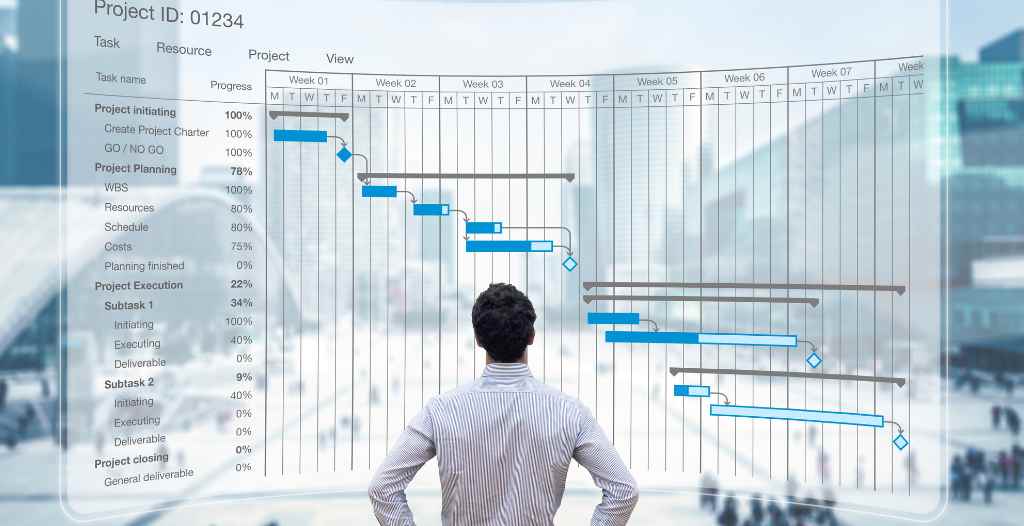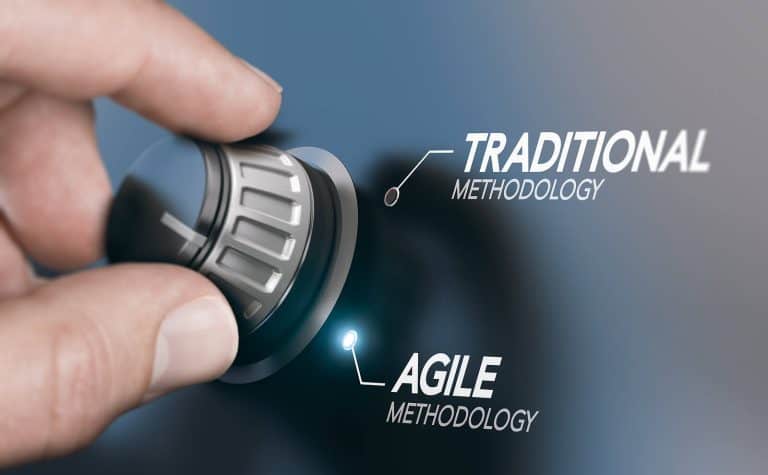What Is the Crystal Agile Methodology?
As software development approaches continue to evolve, agility and flexibility are as important as ever. The Crystal Agile Methodology has been around since 1991, but it remains extremely valuable for supporting just about every software development method in use today. Read on if you’d like to know more about it and learn how to apply it within your own organization.
Table of Contents
ToggleWith a human-centric approach and flexibility, The Crystal Agile Framework is founded on the principle that every project is unique, requiring a bespoke strategy that prioritizes people in a development team and their interactions over fixed processes and tools.
Crystal Agile is not merely a set of guidelines for developing software; The agile framework represents a philosophical shift towards recognizing the fluidity of software development and the critical role of humans within it. The Crystal framework for agile developments is built on two core beliefs:
- Teams can find their own way to improve and optimize how they work
- Every project is different and ever-changing, which is why teams should be empowered to decide how they want to work
This leads to a strategy that places team communication and collaboration at the forefront, enabling a flexible and adaptable environment conducive to continuous improvement.
This ethos ensures that the delivery of functional software is not just an outcome but a continuous journey marked by the collective effort and insights of the team.

Historical Background to the Crystal Agile Framework
The journey of Crystal Agile began in 1991, conceived by Alistair Cockburn during his tenure with IBM.

Cockburn, a luminary in the software development arena, introduced the Crystal Agile methodology as an antidote to the one-size-fits-all methodologies that dominated the industry.
He suggested that software development is a deeply human activity, and as such, it thrives on interaction, collaboration, and adaptability.
From these early beginnings as a lightweight, agile methodology, Crystal Agile has evolved, emphasizing less on prescriptive processes and more on the individual and team interactions in a software development process.
Core Principles of the Crystal Agile Methodology
Crystal Agile is built on a set of seven guiding tenets designed to enhance team performance and software quality:

Frequent Delivery
The cornerstone of Crystal Agile is the regular delivery of usable code to real users. This principle ensures that feedback is received early and often, allowing teams to adjust their work in alignment with user needs and expectations. It champions the idea that the best measure of progress is working software that adds value to end-users.
Reflective Improvement
Crystal Agile encourages teams to regularly reflect on their performance and processes. This introspection enables the identification of inefficiencies and the implementation of strategies for continuous improvement. By fostering a culture of openness and learning, teams can evolve their practices to become more effective over time.
Osmotic Communication
This principle highlights the importance of effortless, face-to-face communication among team members. By working in close proximity, information flows seamlessly within the team, enhancing understanding, reducing misinterpretations, and fostering a collaborative environment.
This communication style is especially beneficial in complex and dynamic project environments where rapid response to change is crucial.
Personal Safety
Crystal Agile recognizes that team members must feel secure in expressing ideas, questions, and concerns without fear of criticism or retribution.
A safe environment encourages experimentation, innovation, and honest communication, all of which are essential for agile development and problem-solving.
Focus on Work
By emphasizing the importance of concentrating on tasks that directly contribute to project goals, Crystal Agile helps teams prioritize their efforts on work that matters.
This principle advocates for eliminating distractions and unnecessary processes that can dilute focus and productivity.
Access to Subject Matter Experts and Users
Direct interaction with real users and experts ensures that the development team has a clear understanding of user needs and domain-specific challenges.
This access allows for accurate requirement gathering, immediate feedback, and the ability to make informed decisions swiftly, thereby enhancing the relevance and usability of the software being developed.
Technical Tooling
While Crystal Agile prioritizes individuals and interactions, it also recognizes the role of appropriate technical tools in supporting the development process.
This principle advocates for the use of tools that enhance efficiency, quality, and collaboration without overwhelming the team with unnecessary complexity.
Together, these core principles of the Crystal Agile Methodology form a robust foundation that supports a flexible, adaptive, and human-centered approach to software development.
By adhering to these tenets, development teams can navigate the complexities of their projects while maintaining a focus on delivering high-quality software that meets the evolving needs of users.
Crystal Framework Variants Explained
A standout feature of the Crystal Agile Methodology is its color-coded classification system, designed to match the methodology to the specific dynamics of a project.

This useful aspect of Crystal methods takes into account team size, project complexity, and inherent risk, providing a tailored approach that optimizes efficiency and effectiveness. Let’s break down each color and what it represents:
Crystal Clear
Tailored for small teams of up to 6 members, Crystal Clear is the most lightweight version of the Crystal agile methodologies, emphasizing simplicity and minimal process to facilitate rapid development and frequent delivery. This variant is ideal for projects where quick turnaround and high adaptability are key, allowing for close, direct communication among team members.
Crystal Yellow
Designed for slightly larger teams (up to 10 members), Crystal Yellow introduces a few more structured processes and roles to handle the increased complexity and communication needs.
While it retains the emphasis on adaptability and people over processes, it acknowledges that a bit more coordination is necessary to keep the team aligned and productive.
Crystal Orange
For medium-sized teams (10 to 20 members) working on projects of moderate complexity, Crystal Orange comes into play. This variant balances the need for structure with the flexibility required to adapt to changing project needs.
It introduces more defined roles and processes, including risk management strategies, to ensure that the project progresses smoothly without sacrificing the agility that characterizes Crystal.
Crystal Red
Aimed at large teams of 20 to 50 members, Crystal Red is used for complex projects that require significant coordination and risk management.
This variant incorporates more formalized communication paths, decision-making processes, and project tracking methods to manage the complexity and scale of the project.
Despite its structure, Crystal Red maintains the methodology’s core focus on individuals and interactions, ensuring that the project team can respond effectively to change.
Crystal Maroon and Crystal Diamond
Other colors, such as Crystal Maroon and Crystal Diamond, cater to even larger or more complex and high-risk projects.
These variants continue the Crystal tradition of balancing structure with agility, tailoring the approach to the scale and needs of the project while emphasizing the importance of team collaboration, frequent delivery, and continuous improvement.
The Crystal classification system ensures that, regardless of team size or project complexity, there’s a Crystal Agile variant that can be tailored to meet the project’s needs.
This flexibility inherent in the Crystal agile methodology allows development teams to adopt a methodology that supports effective communication, rapid iteration, and a focus on delivering high-quality software that meets user needs.

Key Development Team Roles and Responsibilities within Crystal
The Crystal Agile Methodology distinguishes itself with a unique approach to roles within the project team, focusing on the intrinsic value each role brings to the table. Here’s a closer look at these roles and their critical contributions to the project’s success:
Executive Sponsor: Often sitting outside the immediate project team, the Executive Sponsor provides the project with a strategic vision and ensures that it aligns with the broader organizational goals. This role is responsible for securing resources, advocating for the project at the executive level, and removing high-level obstacles that the team may encounter.

Lead Designer: The Lead Designer takes charge of the project’s overall design and architecture, ensuring that it meets the required standards and objectives. This role involves making key design decisions, guiding the development team in implementing these decisions, and maintaining the integrity of the design throughout the project lifecycle.

Programmer: Programmers, or developers, are the backbone of the development process, translating requirements and designs into working software. Their responsibilities include writing, testing, and debugging code, as well as collaborating closely with other team members to ensure that the software developed aligns with the project’s goals and user needs.

Ambassador User: This role represents the end-users or customers within the project team, providing valuable insights into user needs, preferences, and expectations. The Ambassador User is pivotal in ensuring that the software developed meets real-world requirements and is user-friendly, often participating in testing and feedback loops.

Tester: Testers play a crucial role in the Crystal methodology by ensuring that the software is of high quality and free of defects. Their responsibilities include designing and executing test plans, identifying bugs, and working closely with developers to ensure that issues are resolved promptly.

Tracker: The Tracker monitors the progress of the project against its goals and timelines, providing regular updates to the team. This role involves collecting metrics, analyzing project performance, and identifying areas where adjustments may be needed to stay on track.

Methodology Expert: This role guides the team in applying the Crystal methodology effectively, ensuring that Agile practices are correctly implemented and adapted to the project’s needs. The Methodology Expert helps the team navigate the methodology, tailor it as necessary, and solve any methodological challenges that arise.

Facilitator: The Facilitator, sometimes known as the Scrum Master in other Agile methodologies, helps the team work effectively by removing obstacles, facilitating meetings, and ensuring smooth communication among team members. This role is critical in maintaining the team’s focus and momentum throughout the project.

These roles are not rigid and can be adapted or combined based on the project’s size, complexity, and specific requirements. The flexibility in roles underscores Crystal’s emphasis on people and interactions over strict adherence to predefined roles, allowing teams to collaborate effectively and adapt to project needs dynamically. By clearly understanding and executing their responsibilities, team members can work cohesively towards delivering a successful project.
Strengths and Weaknesses of the Crystal Agile Methodology
The Crystal Agile Methodology, with its emphasis on flexibility, adaptability, and human interaction, offers a distinctive approach to software development.
However, like any methodology, it has its own set of strengths and weaknesses that can impact its suitability for various projects. Understanding these can help teams make informed decisions about when and how to implement Crystal.

Strengths
- Flexibility and Adaptability: Crystal’s foremost strength lies in its adaptability to the unique needs of each project. Unlike more prescriptive methodologies, Crystal can be tailored to match the size, complexity, and risk profile of the project, allowing for a more natural fit that enhances team productivity and project outcomes.
- Enhanced Communication: By prioritizing individuals and interactions over processes and tools, Crystal encourages open, direct communication among team members. This focus on clear, osmotic communication helps to prevent misunderstandings, ensuring that everyone is aligned with the project’s goals and progress.
- Emphasis on People Over Process: Crystal recognizes that the success of a project is largely dependent on the team members involved. By valuing individuals’ skills and interactions, it fosters a collaborative environment where everyone feels valued and empowered to contribute their best work.
- Reflective Improvement: Regular reflection on the development process allows teams to identify and implement improvements continuously. This commitment to iterative learning and adaptation leads to more efficient and effective project workflows over time.
- Frequent Delivery of Working Software: Crystal encourages frequent releases of working software, facilitating early feedback from users and stakeholders. This allows teams to make adjustments early on, ensuring that the final product more accurately meets user needs.
Weaknesses
- Potential for Scope Creep: The very flexibility that is a strength of Crystal can also be a weakness. Without the rigid boundaries set by more prescriptive methodologies, projects may be more susceptible to scope creep, where additional features or changes are added without equivalent increases in time or resources.
- Challenges with Documentation: Crystal’s emphasis on individuals over processes can sometimes lead to inadequate documentation. For projects where detailed documentation is necessary for compliance or future maintenance, this can pose a significant challenge.
- Suitability for Large, Distributed Teams: While Crystal includes variants for larger projects, its core emphasis on close, direct communication can be difficult to maintain in large or geographically distributed teams. This may necessitate additional tools or practices to bridge communication gaps.
- Risk of Misinterpretation: The flexibility of Crystal requires a high level of judgment and experience from the team, which can lead to inconsistencies or misinterpretations of the methodology’s principles. This risk is particularly pronounced in teams new to Agile or Crystal.
- Reliance on Team Autonomy: Crystal’s success is heavily reliant on the team’s ability to self-manage and make decisions autonomously. In environments where hierarchical decision-making is the norm, this shift can be challenging and may require significant cultural adjustments.
Balancing these strengths and weaknesses is crucial for teams considering the Crystal Agile Methodology. While its adaptability, focus on communication, and iterative approach offer significant advantages, teams must also be mindful of the challenges related to scope management, documentation, and the methodology’s application in large or distributed environments.
By acknowledging and addressing these potential pitfalls, teams can more effectively harness Crystal’s strengths to deliver high-quality software that meets user needs.
Implementation Considerations

Adopting the Crystal Agile Methodology entails several critical considerations to ensure its effectiveness and to harness its full potential.
These considerations are fundamental in creating an environment where Crystal’s principles can thrive, delivering value and fostering innovation. Here’s a detailed look at key implementation considerations:
Team Co-location and Direct Communication
Crystal emphasizes the importance of team members being located in the same physical space. This co-location supports osmotic communication—where information flows freely and effortlessly among team members, enhancing collaboration, and speeding up decision-making processes.
Direct, face-to-face interactions are valued for their ability to resolve issues quickly and foster a sense of team unity.
Access to Real Users and Subject Matter Experts
Close collaboration with real users and subject matter experts is crucial for the frequent delivery of working software that truly meets user needs.
Their continuous feedback allows the development team to make adjustments in real-time, ensuring the final product is both high-quality and relevant.
This access supports one of Crystal’s core principles: delivering value to real users through regular iterations.
Adaptive Technical Environment
The technical setup should facilitate a seamless, efficient development process. This includes:
Continuous Integration (CI): Implementing CI practices allows teams to integrate code into a shared repository multiple times a day, helping to catch and resolve issues early.
Automated Testing: To maintain high-quality software without slowing down the development process, automated testing is essential. It ensures that new features or changes do not break existing functionality.
Version Control Systems: A robust version control system is vital for managing changes to the project, enabling multiple team members to work on different aspects simultaneously without conflict.
Flexible and Adaptable Approach
Teams must embrace a mindset of adaptability, recognizing that project needs and goals can evolve. The Crystal framework’s flexibility allows for adjustments to processes and practices as the project progresses, but this requires a willingness from the team to adapt and change as needed.
Reflective Improvement Practices
Implementing mechanisms for regular reflection and adaptation is key. This could be in the form of retrospectives or review meetings where the team assesses what is working and what needs improvement.
This practice is integral to continuous improvement and aligns with Crystal’s emphasis on learning and adapting.
Comprehensive Configuration Management
While Crystal prioritizes individuals and interactions over tools, having a solid configuration management system is necessary to handle changes in a controlled manner, ensuring that the project can accommodate new requirements or adjustments without sacrificing stability.
Emphasis on Quality and Integration
Crystal encourages the delivery of high-quality software through practices like pair programming, code reviews, and maintaining a sustainable pace. The development environment should support these practices to facilitate high-quality output and team well-being.
Cultural Fit

For Crystal to be successfully implemented, the organization’s culture must support its core values. This includes a commitment to transparency, collaboration, and empowerment of team members.
The methodology thrives in environments that value people over processes and foster a culture of trust and mutual respect.
Implementing the Crystal Agile Methodology requires careful consideration of these factors to create an environment conducive to its principles.
By addressing these considerations, teams can leverage Crystal to enhance flexibility, improve communication, and deliver software that meets or exceeds user expectations.
Comparisons Between Crystal Agile Methodology and Other Agile Frameworks
The landscape of Agile methodologies is diverse, each with its unique focus and methods for managing software development projects.

Crystal Agile Methodology distinguishes itself through its emphasis on flexibility, adaptability, and the human elements of software development. Here’s how it compares in more detail to other well-known Agile frameworks
Scrum
Scrum is one of the most popular Agile frameworks, characterized by its use of time-boxed iterations known as sprints, typically lasting 2-4 weeks.
Scrum teams have specific roles (Scrum Master, Product Owner, and Development Team), and they make use of ceremonies like daily stand-ups, sprint planning, sprint review, and sprint retrospective to ensure continuous improvement and clear communication.
In contrast, Crystal does not prescribe fixed roles or iterations. Instead, it adapts to the team’s size and project complexity, focusing on enhancing team communication and direct interaction to suit the project’s unique requirements.
While Scrum is highly structured, Crystal offers more flexibility, making it more suitable for projects where a high degree of adaptability is required.
Kanban
Kanban is another Agile framework that emphasizes continuous delivery without overburdening the development team. It focuses on visualizing the workflow, limiting work in progress (WIP), and managing flow to improve efficiency.
Unlike Crystal, which categorizes projects based on team size and complexity, Kanban applies to any part of a process that needs improvement and is not specific to software development.
Crystal’s approach is more holistic, considering the entire project environment and emphasizing direct communication and team collaboration, while Kanban provides a more process-oriented strategy that can be applied incrementally to existing workflows.
Extreme Programming (XP)
XP is a framework that emphasizes technical excellence and high customer involvement. It includes practices such as pair programming, test-driven development (TDD), continuous integration, and frequent releases to improve product quality and responsiveness to changing customer requirements.
While XP focuses heavily on engineering practices and customer feedback, Crystal places a stronger emphasis on the people involved in the project and their interactions.
Both methodologies stress the importance of delivering working software frequently, but Crystal provides a broader framework that can be tailored to a project’s specific needs, including but not limited to technical aspects.
Lean Software Development
Lean principles focus on optimizing efficiency, eliminating waste, and delivering value to the customer. It shares similarities with Crystal in terms of its adaptability and focus on delivering value.
However, Lean places a strong emphasis on optimizing the entire value stream and making decisions as late as possible to ensure flexibility.
Crystal, while flexible, puts more emphasis on the roles and communication within the project team as opposed to Lean’s focus on process efficiency and waste reduction.
In essence, while frameworks like Scrum and Kanban offer more structured methodologies with defined roles and processes, Crystal Agile stands out for its flexibility and focus on human interaction.
It recognizes that the best approach to software development depends on the specific context of the project, including the team size, complexity, and the dynamic nature of the work.
This makes Crystal particularly valuable for projects where traditional Agile frameworks might be too rigid, allowing for a more customized approach that still adheres to Agile principles of collaboration, customer feedback, and iterative development.
Conclusion
Crystal Agile methodology offers a unique, human-centered approach to agile software development, emphasizing the importance of team dynamics, communication, and adaptability.
Whether you’re an expert in IT and agile methodologies or new to the field, understanding Crystal’s principles and practices provides valuable insights into making your software development projects more efficient, flexible, and successful.
For organizations contemplating Crystal Agile, it represents an opportunity to tailor agile practices to their specific project needs, ensuring not just the delivery of working software but the realization of high-quality solutions that meet real user needs.
Further Reading and Resources
For those interested in delving deeper into Crystal Agile principles and practices, a wealth of resources is available. From Alistair Cockburn’s original writings on the methodology to contemporary analyses and case studies, exploring these resources can provide a more comprehensive understanding of how Crystal Agile can be applied to your software development projects, ensuring that your team not only works agilely but adapts agilely to meet the ever-changing demands of software development.




